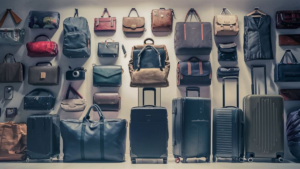When it comes to air travel, understanding baggage allowances is crucial to ensure a smooth journey. Passengers often wonder, “How many bags can I bring on a plane?” The answer varies depending on several factors, including the airline, ticket class, and destination.
Understanding Baggage Allowances
Baggage allowances refer to the number of bags a passenger can bring on a flight, along with any associated fees for exceeding these limits. These allowances are typically determined by the airline and may vary based on the ticket type and destination.
Factors Influencing Baggage Allowances
Several factors influence how many bags a passenger can bring on a plane:
- Ticket Class: Passengers traveling in first or business class often have higher baggage allowances compared to those in economy class.
- Destination: Some airlines may have different baggage policies depending on the destination, such as domestic or international flights.
- Airline Policies: Each airline has its own baggage policies, including allowances for checked baggage, carry-on luggage, and any additional fees for exceeding these limits.
Types of Baggage
Before packing for your flight, it’s essential to understand the different types of baggage:
- Checked Baggage: These are bags that passengers hand over to airline staff during check-in and retrieve at their destination’s baggage claim area.
- Carry-On Luggage: Passengers are allowed to bring a certain number of carry-on bags onto the plane with them, which are stored in the overhead compartments or under the seat.
- Personal Items: In addition to carry-on luggage, passengers are typically allowed to bring one personal item, such as a purse or laptop bag, onto the plane.
Baggage Fees and Restrictions
It’s important to be aware of any baggage fees and restrictions before your flight:
- Excess Baggage Fees: Airlines often charge fees for checked baggage that exceeds the allowed weight or number of bags.
- Size and Weight Restrictions: Airlines may have specific size and weight restrictions for both checked and carry-on luggage, so it’s essential to check these requirements before packing.
- Special Items: Certain items, such as sports equipment or musical instruments, may require special handling or incur additional fees.
Checking Baggage Allowances
Before your flight, it’s recommended to check your airline’s baggage allowances to avoid any surprises or additional fees at the airport. This information is typically available on the airline’s website or can be obtained by contacting their customer service.
Understanding how many bags you can bring on a plane and any associated fees or restrictions is essential for a stress-free travel experience. By familiarizing yourself with your airline’s baggage policies and packing accordingly, you can ensure a smooth journey from check-in to arrival.
Frequently Asked Questions
Here are some common questions related to baggage allowances when traveling by air:
- What happens if I exceed the baggage allowance?
- Are there any items that are not allowed in checked baggage?
- Can I bring a pet as part of my baggage?
If you exceed the baggage allowance, you may be subject to additional fees charged by the airline. These fees can vary depending on the airline’s policy and the extent to which you exceed the allowance.
Yes, there are certain items that are restricted or prohibited in checked baggage, such as flammable liquids, explosives, and perishable items. It’s essential to check the airline’s guidelines for prohibited items before packing your checked luggage.
Most airlines have specific policies regarding the transportation of pets. In general, pets may be allowed either as carry-on or checked baggage, depending on their size and the airline’s regulations. Additional fees and requirements may apply for transporting pets.
Additional Considerations
Aside from baggage allowances, there are other important factors to consider when preparing for air travel:
- Security Screening:
- Customs and Immigration:
Passengers are required to undergo security screening before boarding the aircraft. This process includes screening of both carry-on and checked baggage to ensure compliance with safety regulations.
For international flights, passengers must go through customs and immigration procedures upon arrival at their destination. It’s essential to familiarize yourself with the customs regulations of the country you’re traveling to and declare any necessary items.
Travel Tips
Here are some tips to help you manage your baggage effectively and ensure a smooth travel experience:
- Pack Light:
- Use Packing Cubes:
- Know Your Rights:
Try to pack only the essentials to avoid exceeding baggage allowances and minimize the hassle of carrying heavy luggage.
Organize your belongings using packing cubes or compression bags to maximize space and keep items neatly arranged.
Familiarize yourself with your rights as a passenger regarding baggage allowances, compensation for lost or damaged luggage, and other relevant policies.
| Item | Allowed | Restricted/Prohibited |
|---|---|---|
| Sharp Objects (e.g., scissors, knives) | No | Yes |
| Liquids (e.g., toiletries, beverages) | Yes (in limited quantities) | Yes (over certain volume) |
| Batteries (e.g., lithium batteries) | Yes (in carry-on) | No (in checked baggage) |
See also:






